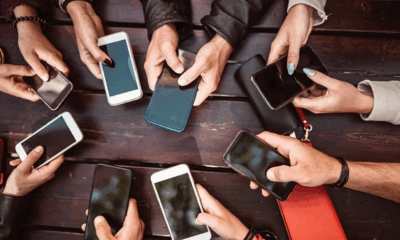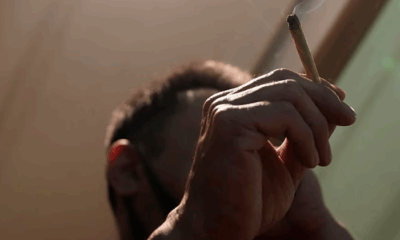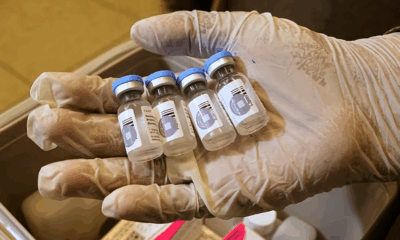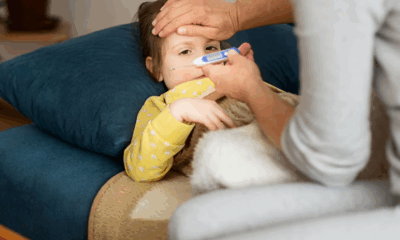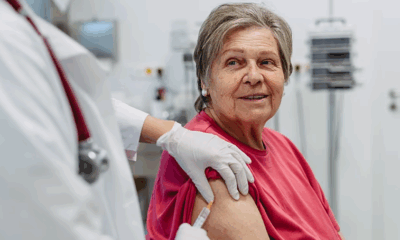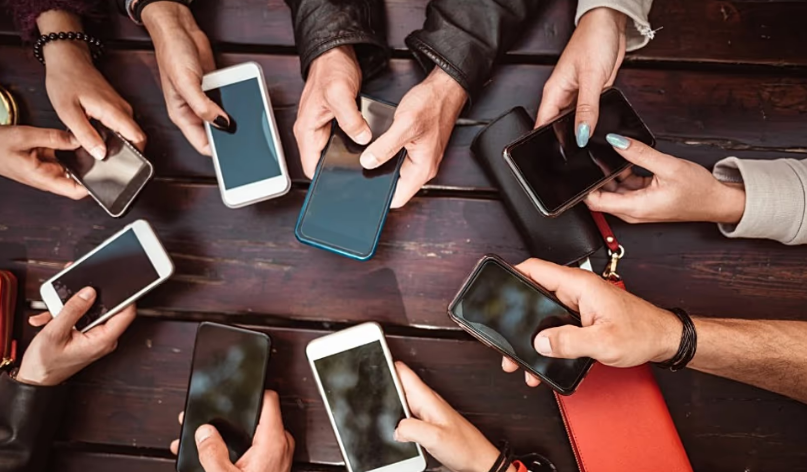Health
Genes Behind Impulsive Behaviour Linked to Mental Health, Obesity and Chronic Disease, Study Finds

Health
One-Week Social Media Break Linked to Lower Depression and Anxiety in Young Adults, Study Finds
Health
Health Experts Warn of Rising Cannabis Addiction as Stronger Strains Drive Higher Risks

As concerns grow about the increasing strength and availability of cannabis across Europe and the United States, health specialists are urging the public to recognise the early signs of addiction. The warning comes amid rising cases of cannabis use disorder, a condition now affecting a significant share of users.
“If pot interferes with your daily life, health, or relationships, those are red flags,” said Dr Smita Das, an addiction psychiatrist at Stanford University. She noted that a persistent myth continues to mislead users: the belief that marijuana is not addictive. According to her, this misconception has spread even as evidence shows a steady rise in dependency.
Cannabis is now the most widely used illegal drug in Europe, according to the European Union Drugs Agency (EUDA). Data from the US Centers for Disease Control and Prevention indicates that about three in ten users develop cannabis use disorder. Dr Das stresses that addiction is a documented medical condition. “Cannabis is definitely something that someone can develop an addiction to,” she said.
A major factor behind the rise is the growing potency of modern cannabis products. In the 1960s, most marijuana contained under 5 per cent THC, the psychoactive component. EUDA figures show that today’s cannabis flowers contain an average of 11 per cent THC, while concentrates reach about 23 per cent. Experts say stronger products increase the likelihood of dependency, especially among frequent users.
Cannabis use disorder is diagnosed using criteria from the Diagnostic and Statistical Manual of Mental Disorders. These criteria include needing larger amounts of the drug to achieve the same effect, experiencing withdrawal symptoms, and spending excessive time using or seeking cannabis. “When we break it down into these criteria that have to do with the impacts of their use, it’s a lot more relatable,” Dr Das said.
The severity of the condition varies. Meeting two criteria in the past year signals a mild form, while six or more indicate a severe case. International data shows that around 0.5 per cent of EU residents aged 15 to 64 had the disorder in 2019. Experts emphasise that addiction affects individuals differently. The same amount of cannabis may disrupt one person’s daily life significantly while leaving another largely unaffected.
Treatment options are available. Motivational interviewing, a goal-oriented counselling method, and cognitive behavioural therapy (CBT) are among the most effective approaches. Peer support groups, including Marijuana Anonymous, also play an important role.
Online communities are expanding as well. Dave Bushnell, a retired digital executive creative director, founded a Reddit group 14 years ago for people grappling with cannabis dependency. The forum now counts 350,000 members. “This is potheads taking care of potheads,” he said, describing the value of peer support.
Doctors encourage anyone struggling with marijuana use to seek help early. As Dr Das noted, “Just because something’s legal doesn’t mean that it’s safe.”
Health
New Global Reviews Confirm HPV Vaccine Strongly Reduces Cervical Cancer Risk With No Serious Side Effects

Studies show girls vaccinated by age 16 face dramatically lower cervical cancer risk with no major side effects. Two major international reviews have reaffirmed that the human papillomavirus (HPV) vaccine is highly effective in preventing cervical cancer, offering one of the clearest assessments to date of its long-term benefits and safety. The impact of the slowdown in major global economies will be “smaller” on the UAE’s growth and exports due to its relatively less exposure to those markets compared to other markets across the region, the World Bank said.
The Cochrane reviews, released this week, analysed data from clinical trials and real-world research involving more than 132 million people worldwide. The findings show that girls aged 16 or younger who received the HPV vaccine were 80 per cent less likely to develop cervical cancer compared to unvaccinated peers. The jab also significantly reduced precancerous cervical changes, with the strongest protection observed when individuals received the vaccine before any exposure to the virus.
“We now have clear and consistent evidence from around the world that HPV vaccination prevents cervical cancer,” said Nicholas Henschke, one of the review authors and head of Cochrane Response.
HPV is a widespread family of viruses, most of which are harmless, but several strains are known to cause cancers of the cervix, anus, penis, vulva, vagina, mouth and throat. According to the World Health Organization, cervical cancer remains one of the most common cancers in women, with about 660,000 new cases and an estimated 350,000 deaths recorded globally in 2022.
While vaccines such as Cervarix and Gardasil have long been recognised as major medical advances, they have also been at the centre of controversy. In recent years, Merck & Co., the manufacturer of Gardasil, has faced lawsuits alleging health complications linked to the vaccine. A US judge dismissed the claims earlier this year, calling them speculative and unsupported by evidence.
Cochrane’s review assessed both minor and serious side effects reported in vaccine recipients. The researchers found that common reactions—such as temporary soreness in the arm—were mild and short-lived. After comparing safety reports with real-world follow-up data, the team found no evidence that HPV vaccination increases the risk of severe medical problems. Serious health issues were recorded at similar rates in both vaccinated and unvaccinated groups.
“An important finding was that the commonly reported side effects of the vaccine, often discussed on social media, were found to hold no evidence of a real link to vaccination,” Henschke said.
The results support ongoing global guidance to vaccinate both girls and boys ideally before they turn 16, when protection is strongest. Dr Jo Morrison, a gynaecological oncologist and co-author of the review, said vaccinating boys helps strengthen community-wide protection and is expected to reduce cancers affecting men later in life.
While most existing studies come from high-income countries, researchers say more data from lower-income regions is needed, especially in areas with the highest cervical cancer rates. Scientists expect clearer evidence in the years ahead as long-term monitoring continues.
“It will take decades to fully understand the impact of vaccination,” Morrison added, noting that the early findings already point to a significant reduction in future cancer cases.
-

 Entertainment1 year ago
Entertainment1 year agoMeta Acquires Tilda Swinton VR Doc ‘Impulse: Playing With Reality’
-

 Business2 years ago
Business2 years agoSaudi Arabia’s Model for Sustainable Aviation Practices
-

 Business2 years ago
Business2 years agoRecent Developments in Small Business Taxes
-

 Home Improvement1 year ago
Home Improvement1 year agoEffective Drain Cleaning: A Key to a Healthy Plumbing System
-

 Politics2 years ago
Politics2 years agoWho was Ebrahim Raisi and his status in Iranian Politics?
-

 Business1 year ago
Business1 year agoCarrectly: Revolutionizing Car Care in Chicago
-

 Sports1 year ago
Sports1 year agoKeely Hodgkinson Wins Britain’s First Athletics Gold at Paris Olympics in 800m
-

 Business1 year ago
Business1 year agoSaudi Arabia: Foreign Direct Investment Rises by 5.6% in Q1

